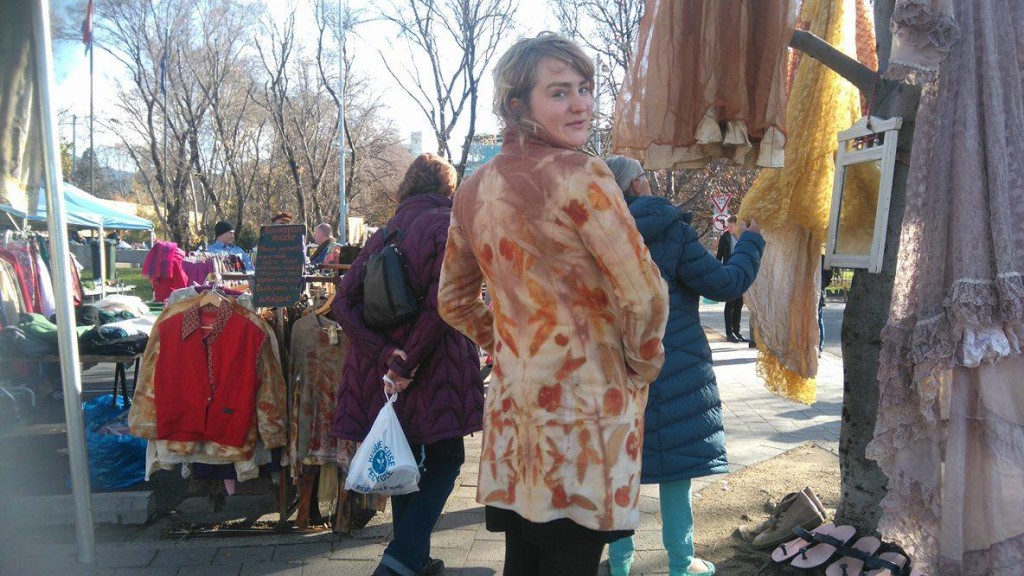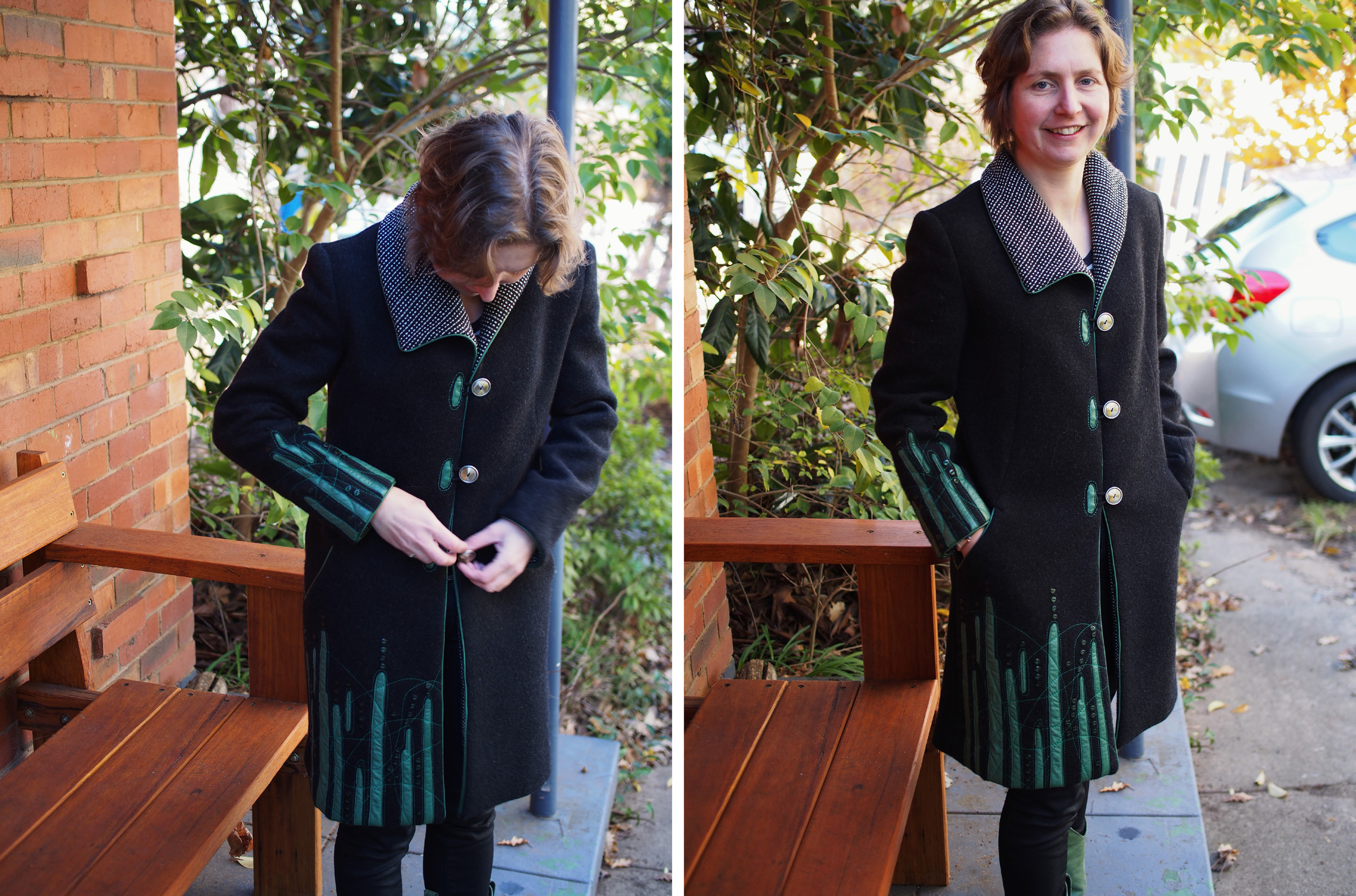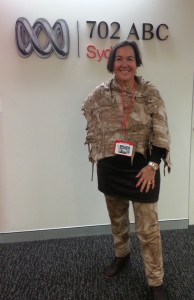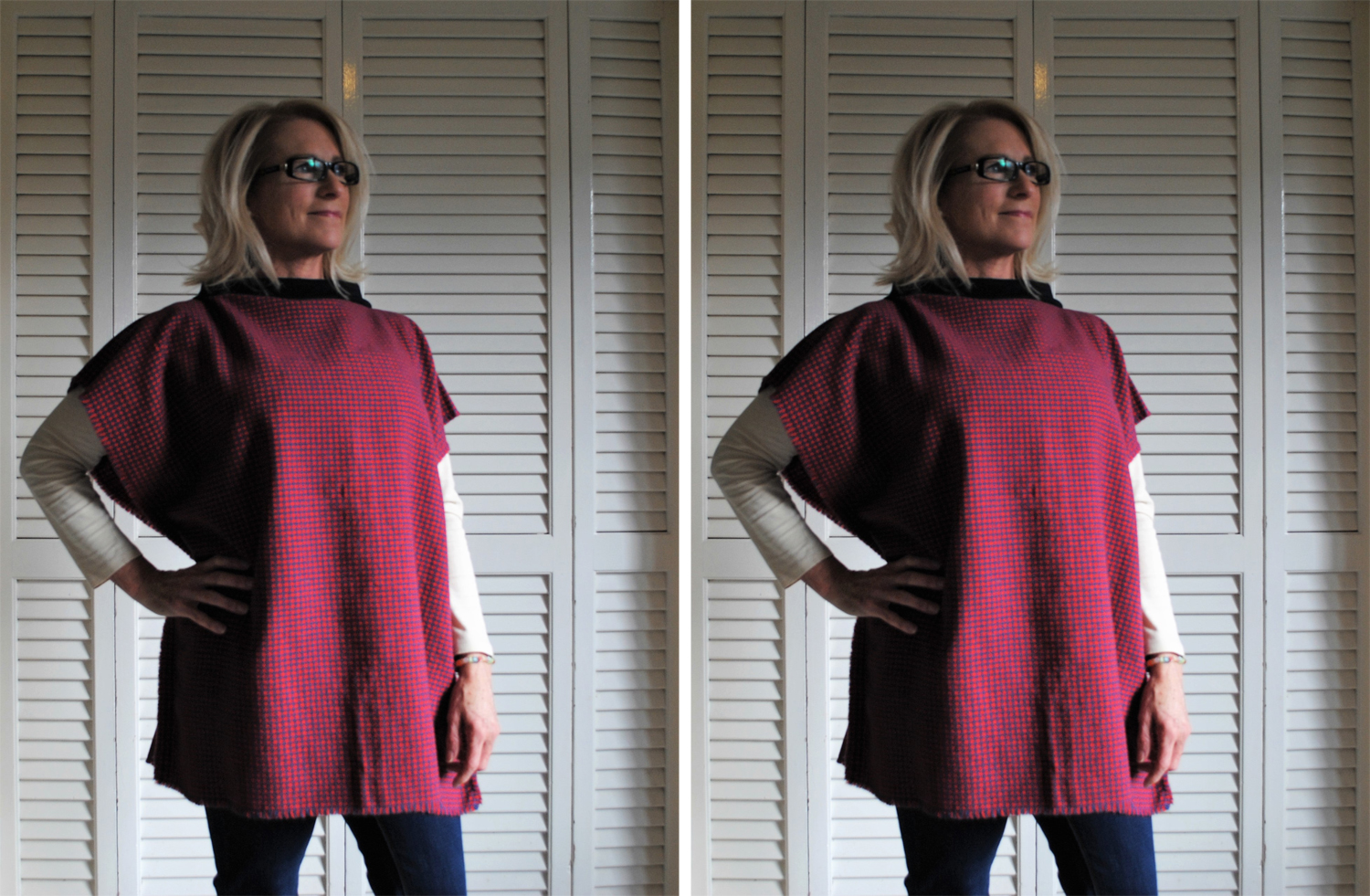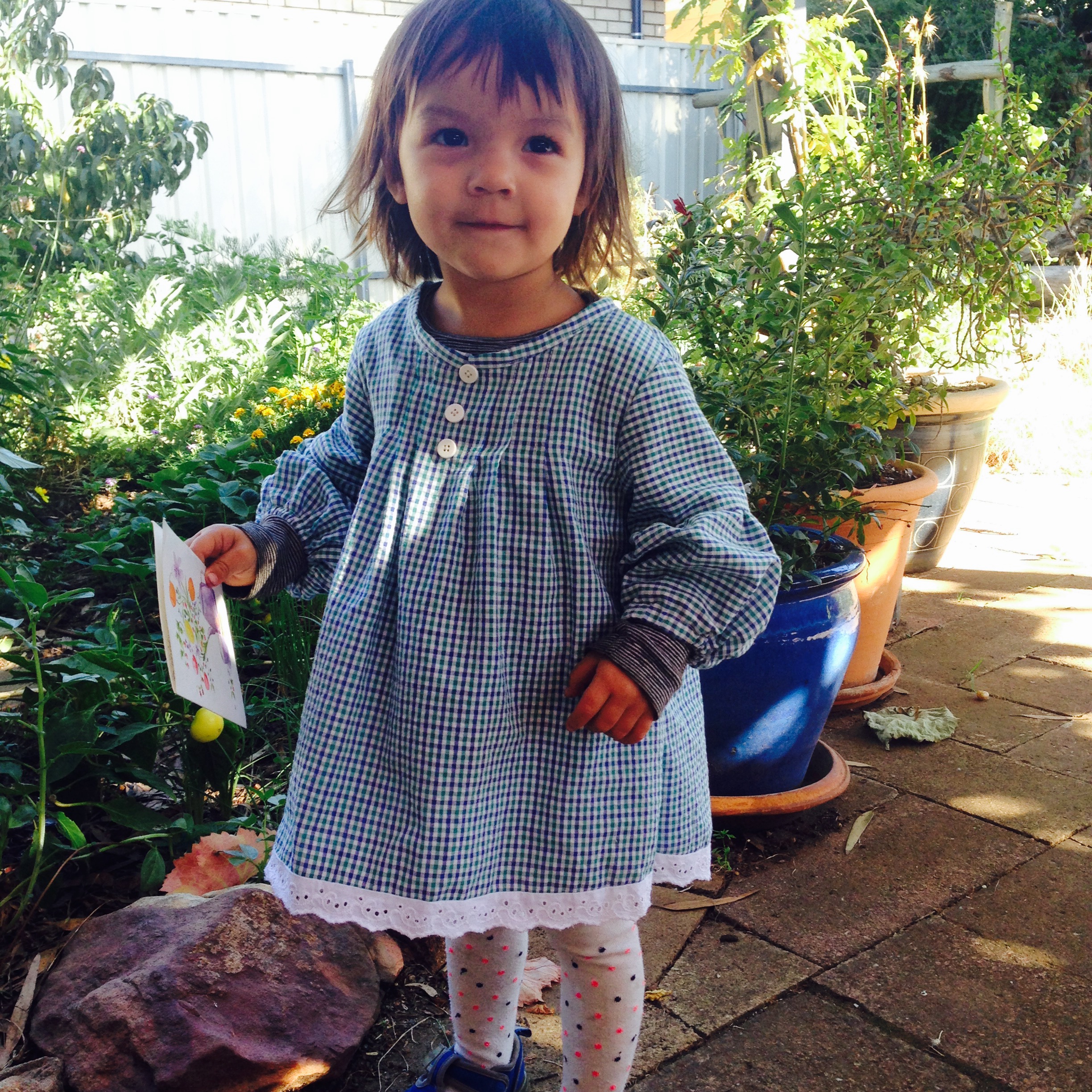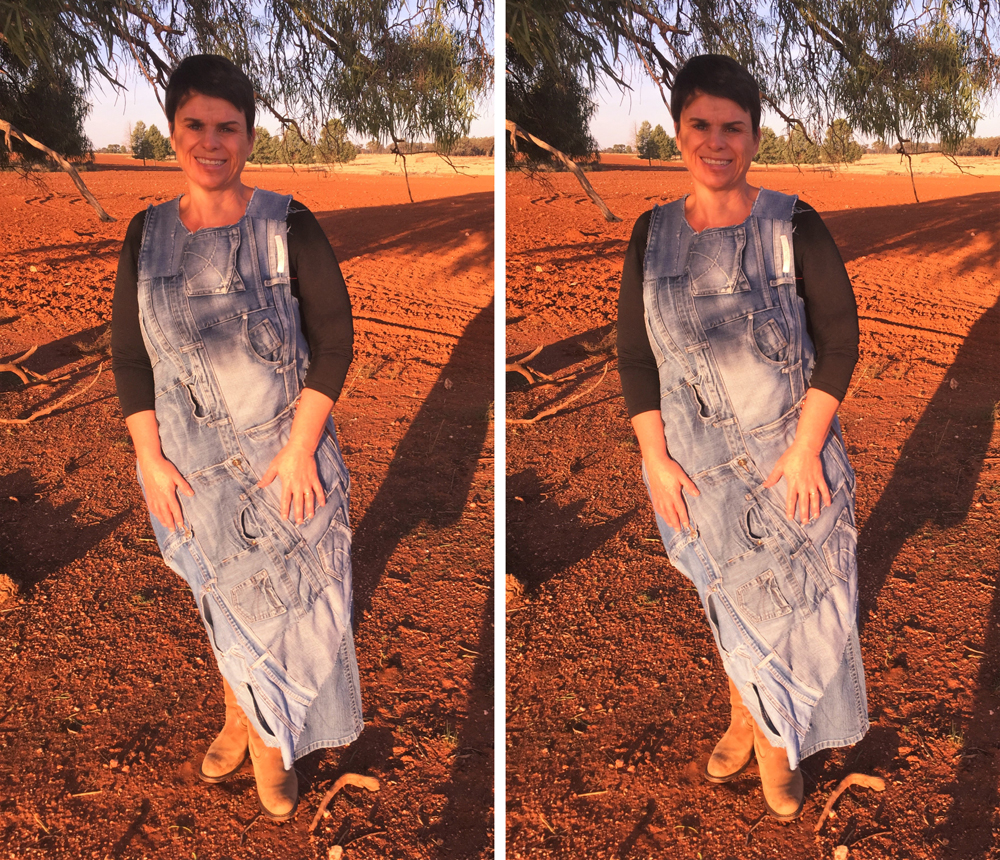Brisbane-based textile enthusiast Denise Traynor believes that how we choose to spend our money ultimately has an impact on how things are made. “If consumers reject exploitative, wasteful production techniques, over packaging and excessive transport models by insisting on locally produced, fair-traded goods, we can lower our carbon footprint and reduce the demand for unfair wages and slavery used to produce them,” Denise said.
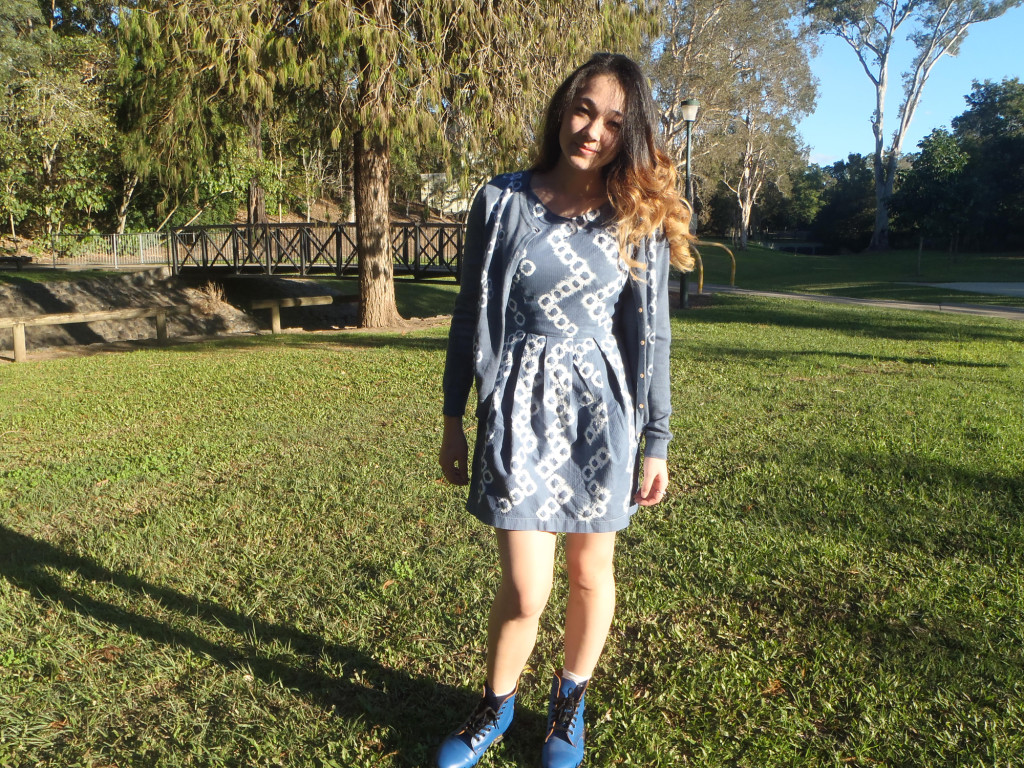
Mei models the dress and cardigan Denise Traynor shibori-dyed as a matched set for The Slow Clothing Project.
Denise also believes that reusing and remaking otherwise obsolete items helps to counteract the wasteful, mass production, mass consumption model that is causing so much environmental and social harm in the world. “I believe our disposable society has contributed to this harm. Plastic fibres, wearing clothes for one or two seasons, produced in third world countries with poor employment and environmental protection records, has made mountains of waste and other pollution.”

